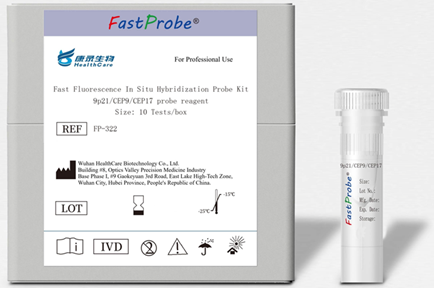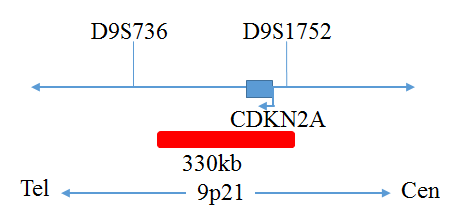RUO - FP322 9p21/CEP9/CEP17 probe reagent

Cat.# FP-322: 9p21/CEP9/CEP17 Probe Reagent
[Overview]
Bladder cancer is the most common malignant tumor of the urinary system. In the course of bladder cancer development, the abnormal expression of the cancer cells chromosome karyotype is extremely complex. Studies have shown that a considerable number of non-random chromosomes number and structure aberrations occur in the development, staging, grading, and therapeutic response of bladder cancer. A large number of studies have shown that chromosomes 3, 7, 17, and 9p21 are aberrations main diagnostic marker of bladder cancer, and detecting these abnormal chromosomes has important significance in the diagnosis and prognosis of bladder cancer.
The recurrence rate of bladder cancer patients is higher after treatment; therefore, it should be monitored. Standard monitoring protocols include cystoscopy and urine exfoliative cells examination. Cystoscopy is invasive and has poor compliance. It is difficult to diagnose early superficial tumors, and 10%-30% is false negative. Although the urine exfoliative cells examination is not invasive, it has high sensitivity to high-grade tumor, but it has low sensitivity to low grade tumor. Therefore, finding an effective early detection method for bladder cancer recurrence is an urgent problem to be solved. A large number of reports have shown that urine exfoliated cells fluorescence in situ hybridization technology has the advantages of being non-invasive, sensitive and specificity, and the sensitivity increases with the increase of tumor staging stage and is an ideal means for diagnosing and monitoring bladder cancer recurrence.
This product uses urinary sediment cells from patients with suspected bladder cancer as a test object and uses fluorescence in situ hybridization to detect loss of aneuploidy and p16 (9p21) on chromosomes 3, 7, 17 in exfoliated cells. It can be used as an auxiliary measure for the early diagnosis of bladder cancer and the recurrence of bladder cancer in the patients with hematuria.

[Download] 9p21/CEP9/CEP17 Probe Reagent Instructions
[Download MSDS] MSDS

